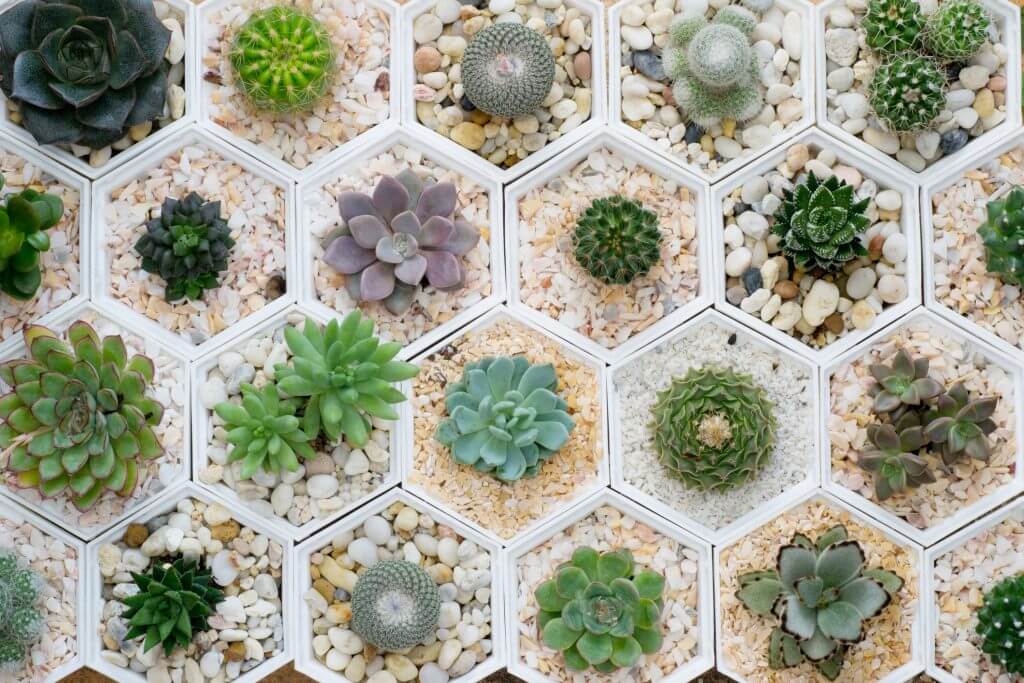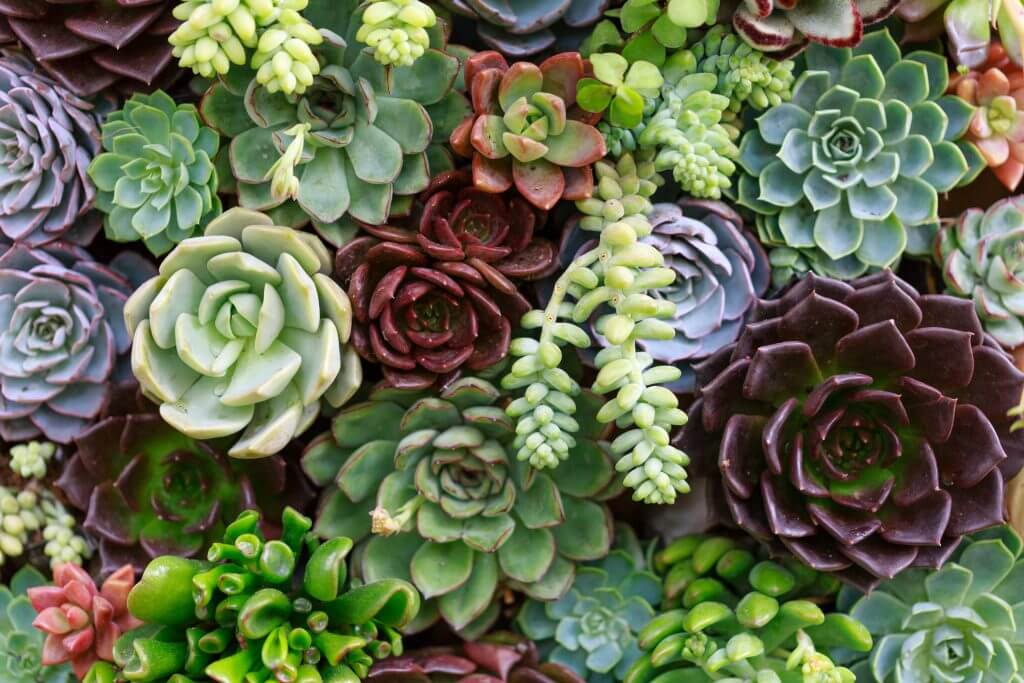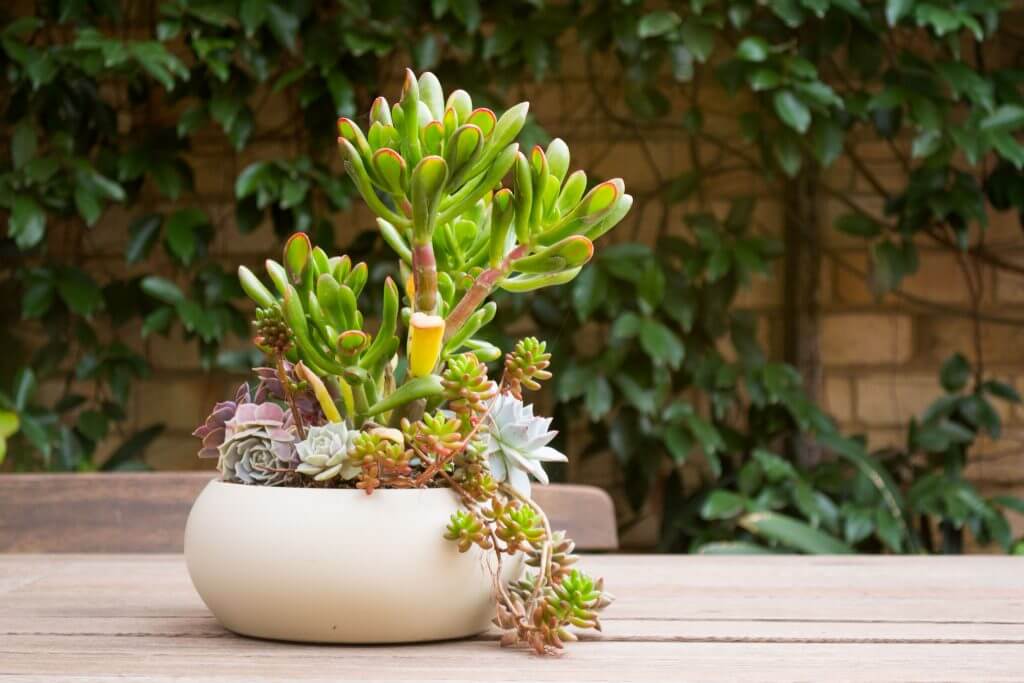Succulent plants are popular for the wide variety available out there.
Some people choose them not just for the looks, but also for how easy it is to maintain these plants.
Succulents are made to withstand extreme arid and hot weather conditions.
However, it can be tricky, and it has been known that some people will still manage to kill these plants while in their care.
Caring for succulent plants is indeed easy and straightforward if you know the right things to do.

The Basics of Succulent Plants
Succulent plants, simply called succulents, are plants that can retain water in very dry conditions.
Succulents retain water through their leaves, stems, and roots which are usually fleshy, thickened and engorged. Hence the name ‘succulent,” which comes from the Latin sucus, which means sap or juice.
Several ways make succulents different from most other plants:
Some succulents minimise water loss by employing crassulacean acid metabolism (CAM).
Succulents usually have cylindrical to spherical leaves, and sometimes reduced or even absent.
For those with leaves, there is a reduction in stomata to minimise evaporation.
Succulents with no leaves use the stems as the primary site of photosynthesis.
These plants also can retain their water and keep their succulence even at very high internal temperatures.
You may notice that some succulents have ribs. These ribs enable the rapid increase in the volume of the plant while decreasing the surface area that is exposed to the sun.
Some succulent plants, especially those popular for indoors, are compact and cushion-like and have reduced columnar, or spherical growth form.
Succulent plants can have a hairy, spiny, or waxy outer surface to create shade and reduce water loss. These features allow the succulents to create a more humid micro-habitat around them by reducing the air movement near its surface.
When you break open a succulent plant’s leaf or branch, you will notice this gooey substance. This substance is mucilaginous, enabling the succulent to retain a lot of water.
Most succulent plants have shallow root growth by design so that they can take up any moisture even from the light rain or heavy dew before the water evaporates.


Planting Your Succulents
You can propagate succulents through cuttings or by getting a grown plant.
Carefully choose the right kind of succulent for your conditions. Some succulent plants prefer bright and sunny positions for most of the day, while some can tolerate a little bit of shade.
If you get a succulent from the nurseries, make sure to remove as much of the soil it came with, without damaging the succulent’s roots.
Most of the time, nursery-grown succulents are put in ordinary potting mix. However, such soil may not be ideal for your succulents in the long-run.
Succulent plants need well-draining sandy soil, something that does not retain too much moisture.
If you will plant your succulent in a container, it will help to put a mesh to cover the drainage hole, since you will be using sandy and relatively loose soil. The mesh will prevent loose soil from falling out.
Choose the appropriate container for your succulent, taking into consideration the mature size, usually about an inch or two (2.5 to 5 cm) larger than the container it came with.
Fill the container with soil until about close to the top, leaving enough to accommodate the succulent’s roots, but not cover any leaf. Remember that succulents tend to grow their roots shallow.
Place the succulent on the potting soil and fill to the top, but leave a little room for succulent topdressing.
Topdressing for succulents could be gravel or tiny pebbles. There are also decorative or colourful succulent topdressing available.
Do not water immediately. Wait about a day or two after planting before you water your succulent to prevent root rot.


Caring for Your Succulent Plants
If you have indoor succulent plants, make sure to place them in bright and sunny positions. They love the sun.
Do not overwater your succulents. However, when you do water them, do it completely and thoroughly. Wait until the soil dries before watering again.
Make sure that the water drains properly and not left sitting inside the container for too long.
Feed your succulents once a year, in spring or summer. Do not fertilise in winter or close to winter because they will be semi-dormant during colder weather.


Common Problems with Succulent Plants
One of the most common problems with succulent plants is overwatering. Since succulents are made to withstand drought, they do not tolerate too much moisture in the soil.
Root rot can happen with too much watering, and your succulent plants will turn red, brown, or even black. It will turn soggy, become slimy, and will give off an unpleasant odour.
Underwatering could also be an issue. You will notice that the upper leaves of your succulent will wilt, wrinkle, and become crispy dry.
Overcrowding succulents could also be an issue. Although it looks great in photos, arranging and planting succulents too close to each other could promote fungal and bacterial growth. So make sure to space out the planting of your succulents.
Even if succulents love the sun, some varieties can get sunburn which would cause calloused and brown patches along the leaves.
On the contrary, if succulents do not get enough light, they can grow lanky and leggy.
If planted outdoors, succulents may suffer from frost, and its leaves will collapse, turn grey-yellow and become mushy.
Succulents are usually not too susceptible to pests. But if you notice some irregular new growth, check for problems. Most common succulent pests are mealy bugs, aphids, and spider mites. Use the appropriate insecticide for succulents to get rid of pests. Outdoor succulents are attractive to mice and red spider mites. Set up traps for mice or protect your succulent plants by covering it with wire mesh.
[elementor-template id=”4604″]
[elementor-template id=”6387″]
